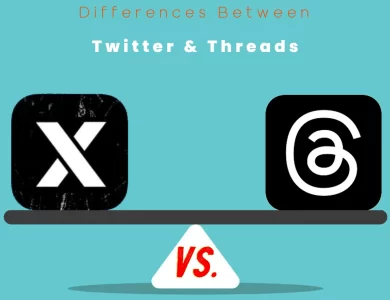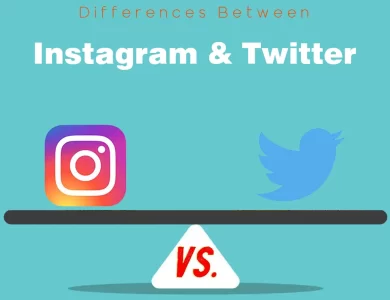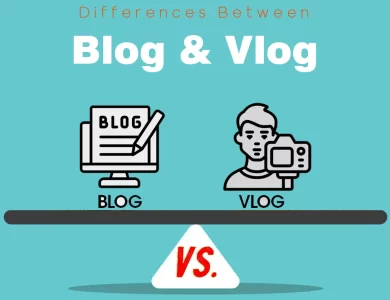
| Aspect | Freeware | Shareware |
|---|---|---|
| Definition | Software available at no cost. | Software offered with limited features for free, with an option to purchase a full license for advanced functionality. |
| Licensing | Often permissive licenses allowing modification and distribution. | Restrictive licenses during trial, unlocked with purchase. |
| Cost | Free to download and use. | Free trial period, cost associated with full version. |
| Trial Period | No time limit for usage. | Time-limited trial period, typically days to weeks. |
| Usage Restrictions | Generally minimal restrictions. | Usage restrictions lifted upon purchasing license. |
| Support and Updates | Varies, often basic community support. | Comprehensive support and regular updates upon purchase. |
| Popularity | Popular due to affordability. | Popular, appeals to users willing to invest in advanced features. |
| Business Use | Suitable for personal, education, small business. | More suitable for businesses requiring advanced features. |
| User Experience | Focuses on seamless usage. | May have periodic reminders to upgrade during trial. |
| Community Impact | Driven by altruism and goodwill. | Revenue contributes to ongoing development and support. |
| Marketing | Relies on word-of-mouth, online communities. | Structured marketing strategies, advertising. |
| Software Complexity | Spans simple to complex applications. | Often offers advanced, feature-rich solutions. |
| Customization | May allow user-driven customization. | Feedback-driven enhancements during trial. |
| Sustainability | Depends on developer’s motivations and resources. | Sustained by license revenue for ongoing development. |
| Risk and Reward | Low risk due to no financial investment. | Higher risk due to eventual financial commitment. |
| Legal Considerations | Terms may allow modification and distribution. | Clear transition from trial to purchase. |
| Decision Factors | Cost-free use, acceptable limitations. | Value of advanced features justifying cost. |
When it comes to the world of software, two terms that often pop up are “freeware” and “shareware.” These two categories represent different ways in which software is distributed to users. Whether you’re a tech enthusiast, a casual computer user, or a business owner seeking the right software solutions, understanding the differences between freeware and shareware can be incredibly helpful. In this comprehensive guide, we’ll walk you through the key aspects that set these two software distribution models apart.
The main differences between freeware and shareware lie in their distribution models and usage. Freeware, as the name suggests, is software available for free without any cost to the user. On the other hand, shareware offers a trial period where users can explore the software’s features for free before deciding whether to purchase a license for full functionality. While freeware is an economical choice for casual users, shareware appeals to those seeking advanced features and is often used by professionals and businesses to evaluate software suitability before committing financially.
Definition
Freeware: Freeware is software that is made available to users at no cost. This means that you can download, install, and use the software without having to pay any money. It’s a generous way for developers to share their creations with a wide audience without imposing financial barriers.
Shareware: Shareware, on the other hand, is a distribution model where users can initially use the software for free, but with limitations. After a certain trial period or when certain advanced features are desired, users are encouraged to purchase a license or pay a fee to unlock the software’s full functionality.
Licensing
Freeware: Freeware typically comes with a more permissive license. Users are granted the right to use the software for personal or even commercial purposes without having to pay for it. Developers of freeware often allow users to modify and distribute the software as long as it remains free.
Shareware: Shareware usually comes with a more restrictive license compared to freeware. While users can often use the software for free during a trial period, they are required to purchase a license to continue using it beyond that period. The specifics of the licensing terms can vary widely between different shareware products.
Cost
Freeware: The most prominent advantage of freeware is its cost – it’s absolutely free to download and use. This makes it an excellent choice for budget-conscious users or those who want to explore a specific software without committing financially.
Shareware: Shareware might be free during the trial period, but it comes with the potential cost of purchasing a license to access the full set of features. This cost is typically associated with unlocking advanced functionality, removing usage limitations, or extending the software’s usage beyond the trial period.
Trial Period
Freeware: Freeware doesn’t usually have a trial period in the traditional sense. Users can download and use the software for as long as they want, without any time-based restrictions. This makes freeware ideal for long-term use without any pressure to upgrade.
Shareware: Shareware often includes a trial period where users can experience the software’s basic features for free. However, these trial periods are time-limited, typically ranging from a few days to a few weeks. Once the trial period expires, users are prompted to purchase a license to continue using the software.
Usage Restrictions
Freeware: Freeware generally comes with minimal usage restrictions. Users can install and use the software on multiple devices without any issues. Additionally, there are usually no limitations on how the software can be used, whether it’s for personal, educational, or commercial purposes.
Shareware: During the trial period, shareware software might have certain usage restrictions. These could include limitations on the number of times you can use certain features or restrictions on commercial use. Purchasing a license often removes these restrictions.
Support and Updates
Freeware: Support and updates for freeware can vary widely. Some freeware products might come with basic community support, while others might lack ongoing updates or dedicated customer service.
Shareware: Shareware often comes with more comprehensive support and regular updates, especially for users who have purchased a license. This is because the revenue generated from selling licenses contributes to the software’s ongoing development and customer support services.
Popularity and Availability
Freeware: Freeware is quite popular due to its zero-cost nature. Many users are drawn to freeware for its affordability and accessibility. You can find a wide range of freeware options available for various purposes.
Shareware: Shareware, while also popular, might have a slightly smaller user base compared to freeware. Some users might be deterred by the eventual cost associated with unlocking the full version. However, shareware often appeals to users who are willing to pay for enhanced functionality.
Business Applications
Freeware: Freeware can be suitable for personal use, educational purposes, and sometimes even small businesses. However, for larger businesses or organizations with specific software requirements, the limitations of freeware might not align with their needs.
Shareware: Shareware can be a more viable option for businesses that require advanced software functionality. The trial period allows decision-makers to evaluate the software’s fit for their business needs before committing to a purchase.
User Experience
Freeware: Freeware aims to provide a simple and straightforward user experience. Since users don’t have to worry about making payments, the focus is primarily on using the software without any hindrances.
Shareware: Shareware also aims for a positive user experience, but there might be periodic reminders or notifications encouraging users to upgrade to the full version. This can slightly interrupt the user experience, especially for those who prefer uninterrupted software usage.
Community and Development
Freeware: Freeware often has a community-driven development model. Since developers release their software for free, they might rely on user feedback and contributions to enhance the software. This can lead to a diverse range of add-ons, plugins, and user-generated content, enriching the overall experience.
Shareware: While user feedback is still valuable in the shareware model, development might be more closely tied to the revenue generated from licenses. Developers use this income to invest in research, innovation, and continuous improvement, leading to more consistent updates and enhancements.
Ethical Considerations
Freeware: Freeware projects are often driven by a desire to contribute to the software community or to promote a cause. Developers offer their software with no strings attached, fostering a sense of goodwill and altruism.
Shareware: Shareware developers are entitled to compensation for their work, as they invest time, resources, and expertise in creating valuable software. By offering a free trial period, they allow users to assess the software’s worth before making a purchase decision.
Variety of Software
Freeware: The freeware model is diverse and spans various categories, from productivity tools to creative software and beyond. This diversity is fueled by the collaborative efforts of developers who prioritize accessibility.
Shareware: Shareware often encompasses complex and feature-rich software, as developers aim to justify the cost of a full license. This model frequently caters to professional users who require specialized tools for their work.
Marketing and Exposure
Freeware: Freeware developers often rely on word-of-mouth, social media, and online communities to promote their software. Viral marketing can play a significant role in making freeware popular.
Shareware: Shareware products often have a more structured marketing approach. Developers might invest in advertising, partnerships, and endorsements to maximize their reach and attract potential buyers.
Longevity and Sustainability
Freeware: The sustainability of freeware depends on the developer’s motivations and resources. Some freeware projects thrive for years, while others might fade due to lack of support or changing priorities.
Shareware: Shareware’s revenue stream contributes to its sustainability. The income from license sales enables developers to maintain the software, offer updates, and provide customer support over the long term.
User Feedback and Customization
Freeware: Freeware often encourages user involvement in shaping the software’s evolution. Developers are more likely to incorporate user suggestions, leading to a sense of co-creation.
Shareware: Shareware developers prioritize feedback from potential buyers during the trial period. This feedback informs decisions about refining the software’s features and addressing user needs.
Software Complexity
Freeware: Freeware can range from simple, lightweight tools to more complex applications. However, due to the free nature of the distribution, some freeware might lack advanced features found in paid alternatives.
Shareware: Shareware frequently offers comprehensive solutions with advanced features. The trial period is designed to showcase these features, enticing users to invest in the complete package.
Risk and Reward
Freeware: Users who opt for freeware face minimal risk, as they aren’t financially invested. However, they might encounter limitations that prompt them to seek alternatives.
Shareware: Shareware users take on more risk due to the eventual financial commitment. However, the potential rewards lie in the software’s advanced capabilities and the value it adds to their endeavors.
Legal Considerations
Freeware: Freeware developers often specify the terms under which users can modify and distribute the software. Users should be aware of these terms to ensure compliance.
Shareware: The shareware model usually involves a clear transition from a free trial to a paid license. Users need to understand the licensing terms to avoid infringing on the developer’s rights.
Decision-making Factors
Freeware: Choosing freeware hinges on the user’s willingness to accept potential limitations in exchange for a cost-free experience. It’s ideal for personal use, experimentation, or casual tasks.
Shareware: The decision to invest in shareware rests on the software’s value proposition. Users must assess whether the features provided in the paid version justify the cost, particularly for professional or business applications.
In the bustling world of software options, the decision between freeware and shareware is a pivotal one. Each model comes with its own set of benefits and considerations that cater to different needs and preferences. Whether you’re a tech-savvy individual, a business owner, or anyone seeking the perfect software solution, this guide will help you navigate the freeware-shareware crossroads.
Freeware: Embracing Accessibility
When to Choose Freeware:
- Budget-Friendly Approach: If your wallet prefers to stay closed, freeware is your ally. It offers the golden ticket to software without the financial commitment, ideal for those watching their spending.
- Exploration and Experimentation: Are you in the mood for software adventures? Freeware lets you test the waters, experiment with various tools, and discover hidden gems without the strings of cost attached.
- Casual and Personal Use: For personal projects, hobbies, or light tasks, freeware often provides all the necessary functionality without the complexity or price tag of premium software.
Considerations:
- Feature Limitations: While many freeware tools are impressively functional, some might lack the advanced features found in their paid counterparts. Assess whether the available features align with your requirements.
- Support and Updates: Freeware support can vary from minimal community involvement to dedicated forums. Updates might also be less frequent compared to paid software.
When to Choose Shareware:
- Professional Requirements: If your work or business demands sophisticated tools, shareware often provides advanced features that cater to specialized needs. The trial period lets you ensure the software fits the bill before committing.
- Access to Premium Features: Shareware tantalizingly showcases premium features during the trial. If these features are integral to your endeavors, purchasing a license can be a smart move.
- Business Growth: Businesses seeking expansion can leverage shareware to evaluate software solutions for scalability. The cost of licenses is often justified by the added value they bring.
Considerations:
- Trial Expiry: The clock is ticking during the trial period. If the trial ends before you’ve made a decision, you might find yourself grappling with either a purchase or a search for alternatives.
- Financial Investment: Be prepared to invest in shareware. While the return on investment can be substantial, the initial expenditure is a notable consideration.
- User Experience Interruptions: In the pursuit of selling licenses, shareware might include periodic reminders to upgrade, which can momentarily disrupt the user experience.
The Middle Ground: Hybrid Models
In the software spectrum, the lines between freeware and shareware sometimes blur. Developers might offer “lite” versions of shareware, granting a taste of advanced functionality while reserving premium features for license holders. “Freemium” models blend freeware and shareware, providing a free base version with the option to purchase add-ons.
Final Verdict: User-Centric Choice
In the freeware-shareware duel, there’s no one-size-fits-all answer. Your choice hinges on your goals, preferences, and the tasks at hand. Freeware opens doors to budget-friendly exploration, making it perfect for personal use and experimentation. Shareware, on the other hand, caters to professionals seeking the cream of the software crop, with the trial period as a teaser for what’s possible.
Ultimately, it’s your journey through the digital landscape that dictates your choice. Whichever path you tread, whether it’s freeware, shareware, or a blend of both, remember that the world of software is designed to empower you. So, embrace the power of choice and dive into the realm of software with confidence!
FAQs
Freeware refers to software that is available for download and use without any cost. Users can install and utilize the software without being required to make any payment.
Shareware is a software distribution model where users can initially use the software for free during a trial period. After the trial period ends, users are encouraged to purchase a license to access the full set of features.
The primary difference lies in cost and usage. Freeware is completely free, while shareware offers a free trial period followed by a purchase option for continued use.
Yes, in most cases, freeware can be used for both personal and commercial purposes without any payment.
Freeware is cost-effective and suitable for casual users. It allows you to access software without financial commitment and explore various tools without limitations.
Shareware provides access to advanced features that might not be available in freeware. It’s ideal for professionals and businesses looking for specialized tools.
While freeware is fully functional, it might lack some advanced features found in paid software. Additionally, support and updates can vary.
At the end of the shareware trial period, users are prompted to purchase a license to continue using the software with full functionality.
One risk with shareware is that users might invest time and effort during the trial period, only to find that the software doesn’t fully meet their needs after purchasing a license.
The choice depends on your needs and priorities. If you’re looking for cost-free software for personal use, freeware is a good option. If you need advanced features or professional tools, shareware might be more suitable.
Yes, you can transition from using freeware to shareware if you find a software solution with advanced features that align with your needs.
Consider your usage requirements, budget, and the features you need. Freeware is great for exploration, while shareware is valuable for specific tasks and professional use.
Absolutely. Some developers offer “lite” versions of shareware for free, with the option to purchase a license for enhanced features.
Neither is inherently right or wrong. It’s about finding the model that best suits your needs and preferences. Freeware is about accessibility, while shareware focuses on feature-rich options.
Read More:
Contents
- Differences Between Freeware and Shareware
- Definition
- Licensing
- Cost
- Trial Period
- Usage Restrictions
- Support and Updates
- Popularity and Availability
- Business Applications
- User Experience
- Community and Development
- Ethical Considerations
- Variety of Software
- Marketing and Exposure
- Longevity and Sustainability
- User Feedback and Customization
- Software Complexity
- Risk and Reward
- Legal Considerations
- Decision-making Factors
- Freeware or Shareware: Making the Right Choice for You
- Final Verdict: User-Centric Choice
- FAQs






